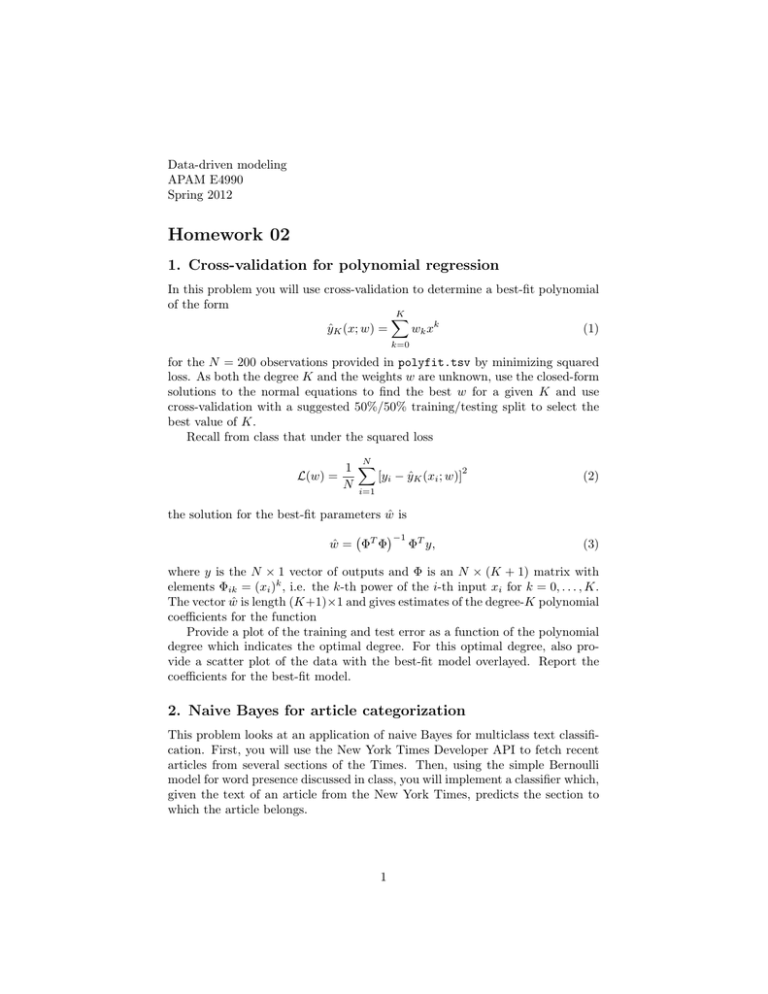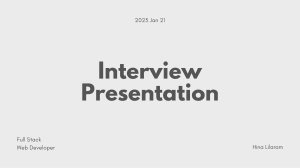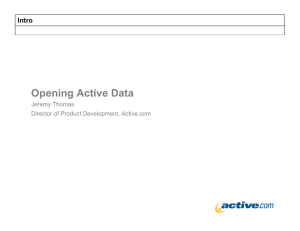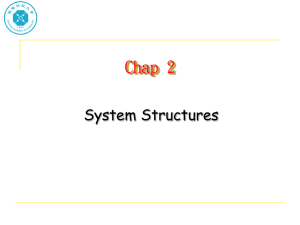Homework 02 1. Cross-validation for polynomial regression
advertisement

Data-driven modeling
APAM E4990
Spring 2012
Homework 02
1. Cross-validation for polynomial regression
In this problem you will use cross-validation to determine a best-fit polynomial
of the form
K
X
ŷK (x; w) =
w k xk
(1)
k=0
for the N = 200 observations provided in polyfit.tsv by minimizing squared
loss. As both the degree K and the weights w are unknown, use the closed-form
solutions to the normal equations to find the best w for a given K and use
cross-validation with a suggested 50%/50% training/testing split to select the
best value of K.
Recall from class that under the squared loss
L(w) =
N
1 X
2
[yi − ŷK (xi ; w)]
N i=1
(2)
the solution for the best-fit parameters ŵ is
ŵ = ΦT Φ
−1
ΦT y,
(3)
where y is the N × 1 vector of outputs and Φ is an N × (K + 1) matrix with
elements Φik = (xi )k , i.e. the k-th power of the i-th input xi for k = 0, . . . , K.
The vector ŵ is length (K+1)×1 and gives estimates of the degree-K polynomial
coefficients for the function
Provide a plot of the training and test error as a function of the polynomial
degree which indicates the optimal degree. For this optimal degree, also provide a scatter plot of the data with the best-fit model overlayed. Report the
coefficients for the best-fit model.
2. Naive Bayes for article categorization
This problem looks at an application of naive Bayes for multiclass text classification. First, you will use the New York Times Developer API to fetch recent
articles from several sections of the Times. Then, using the simple Bernoulli
model for word presence discussed in class, you will implement a classifier which,
given the text of an article from the New York Times, predicts the section to
which the article belongs.
1
First, register for a New York Times Developer API key1 and request access
to the Article Search API.2 After reviewing the API documentation, write code
to download the 2,000 most recent articles for each of the Arts, Business, Obituaries, Sports, and World sections. (Hint: Use the nytd_section_facet facet
to specify article sections.) The developer console3 may be useful for quickly
exploring the API. Your code should save articles from each section to a separate file in a tab-delimited format, where the first column is the article URL,
the second is the article title, and the third is the body returned by the API.
Next, implement code to train a simple Bernoulli naive Bayes model using these articles. Recall from class that we consider documents to belong
to one of C categories, where the label of the i-th document is encoded as
yi ∈ {0, 1, 2, . . . , C}—for example, Arts = 0, Business = 1, etc.—and documents are represented by the sparse binary matrix X, where Xij = 1 indicates
that the i-th document contains the j-th word in our dictionary. We train by
counting words and documents within classes to estimate θjc and θc :
θ̂jc
=
θ̂c
=
njc + α − 1
nc + α + β − 2
nc
n
where njc is the number of documents of class c containing the j-th word, nc
is the number of documents of class c, n is the total number of documents, and
the user-selected hyperparameters α and β are pseudocounts that “smooth” the
parameter estimates. Given these estimates and the words in a document x, we
calculate the log-odds for each class (relative to the base class c = 0) by simply
adding the class-specific weights of the words that appear to the corresponding
bias term:
log
p(y = c|x) X
=
ŵjc xj + ŵ0c
p(y = 0|x)
j
where
ŵjc
=
log
ŵ0c
=
X
j
θ̂jc (1 − θ̂j0 )
θ̂j0 (1 − θ̂jc )
log
1 − θ̂jc
1 − θ̂j0
,
+ log
θ̂c
θ̂0
.
Your code should read the title and body text for each article, remove unwanted characters (e.g., punctuation) and tokenize the article contents into
words, filtering out stop words (given in the stopwords) file. The training
phase of your code should use these parsed document features to estimate the
1 http://developer.nytimes.com/apps/register
2 http://developer.nytimes.com/docs/read/article_search_api
3 http://prototype.nytimes.com/gst/apitool/index.html
2
weights ŵ, taking the hyperparameters α and β as input. The prediction phase
should then accept these weights as inputs, along with the features for new
examples, and output posterior probabilities for each class.
Evaluate performance on a randomized 50/50 train/test split of the data,
including accuracy and runtime. Comment on the effects of changing α and β.
Present your results in a (5-by-5) confusion table showing counts for the actual
and predicted sections, where each document is assigned to its most probable
section. For each section, report the top 10 most informative words. Also
present and comment on the top 10 “most difficult to classify” articles in the
test set. Briefly discuss how you expect the learned classifier to generalize to
other contexts, e.g. articles from other sources or time periods.
3







